
The 2010 Pennsylvania gubernatorial election was held on November 2, 2010, to elect the Governor and Lieutenant Governor of Pennsylvania, concurrently with elections to the United States Senate in Pennsylvania and other states and elections to the United States House of Representatives and various state and local elections.

The Michigan gubernatorial election of 2010 was held on November 2, 2010. Incumbent Democratic Governor Jennifer Granholm was prohibited by the state's Constitution from seeking a third term. This resulted in a large pool of candidates which was whittled down, when the May 11 filing deadline passed, to two Democrats and five Republicans. Both the Cook Political Report and the non-partisan Rothenberg Political Report rated the election as leaning Republican.
Ken Snyder is a principal and co-founder of SnyderPickerill Media Group, a political media firm that specializes in the production of television advertising for political campaigns and candidates. Snyder was formerly a prominent press secretary and public relations manager. He is best known for his work with Democrats, including John F. Street, Ed Rendell, and Vince Fumo.
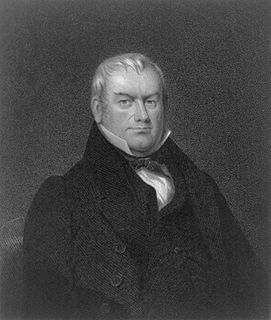
The Pennsylvania gubernatorial election of 1832 occurred on November 6, 1832. Incumbent Governor George Wolf, a Democrat, defeated Anti-Masonic candidate Joseph Ritner to win re-election.

The Pennsylvania gubernatorial election of 1829 occurred on November 3, 1829. U.S. Representative George Wolf, a Democrat, defeated Anti-Masonic candidate Joseph Ritner to win the election.

The Pennsylvania gubernatorial election of 1826 occurred on November 7, 1826. Incumbent Democratic governor, John Andrew Shulze, defeated Federalist candidate John Sergeant by a wide margin.

The Pennsylvania gubernatorial election of 1823 occurred on November 4, 1823. Incumbent Federalist governor, Joseph Hiester, did not seek re-election. The Democratic candidate, John Andrew Shulze, defeated Federalist candidate Andrew Gregg.
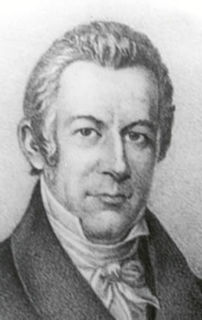
The Pennsylvania gubernatorial election of 1817 occurred on November 4, 1817. Incumbent Democratic-Republican governor Simon Snyder was not a candidate for re-election. Simon's preferred successor, State Treasurer William Findlay, was nominated as the Democratic Republican by a caucus of legislative leaders. Conversely, U.S. Representative Joseph Hiester was chosen as a candidate by the Democratic Republican's first popular nominating convention; he additionally gained the endorsement of the declining Federalists.
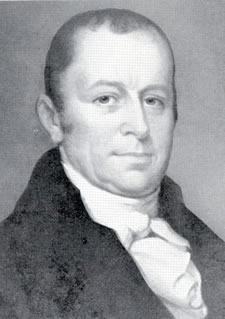
The Pennsylvania gubernatorial election of 1814 occurred on November 8, 1814. After contemplating retirement, incumbent Democratic-Republican governor Simon Snyder instead chose to run for reelection. He earned a third term as the state's executive after defeating Federalist candidate Isaac Wayne, a former member of the Pennsylvania State Senate.

The Pennsylvania gubernatorial election of 1808 occurred on November 8, 1808. Incumbent governor Thomas McKean, a former Democratic Republican who had faced impeachment by members of his own party during the prior term, was not a candidate. Democratic-Republican candidate Simon Snyder, former Speaker of the Pennsylvania House of Representatives defeated Federalist candidate and former U.S. Senator James Ross to become Governor of Pennsylvania. Snyder, with the aid of a supportive press, campaigned as a "New School Democrat" and attempted to ally himself with James Madison. He painted the former McKean administration as elitist and advocated for popular democracy, governmental intervention in the economy, and infrastructural support for Western Pennsylvania counties.
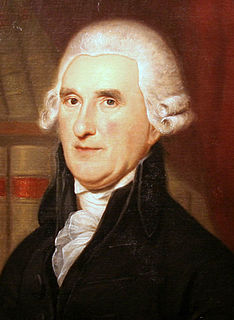
The Pennsylvania gubernatorial election of 1805 occurred on November 5, 1805. Incumbent governor Thomas McKean won a contentious election over the endorsed Democratic-Republican candidate, Speaker of the Pennsylvania House of Representatives Simon Snyder.

The Pennsylvania gubernatorial election of 1802 occurred on November 2, 1802. Incumbent Democratic-Republican governor Thomas McKean successfully sought re-election to another term. As occurred in his prior campaign, he defeated U.S. Senator James Ross, a Federalist.
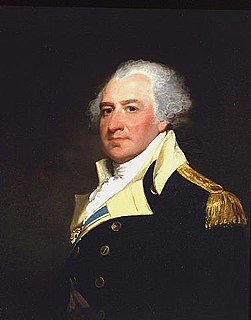
The Pennsylvania gubernatorial election of 1796 occurred on November 8, 1796. Incumbent Democratic-Republican governor Thomas Mifflin successfully sought re-election to a third term. For the second consecutive election, he was victorious over U.S. Representative Frederick Muhlenberg, the Federalist candidate, by a wide margin.

The Pennsylvania gubernatorial election of 1793 occurred on November 5, 1793. Incumbent Democratic-Republican governor Thomas Mifflin successfully sought re-election to another term, defeating Federalist candidate and U.S. Representative Frederick Muhlenberg.

The Pennsylvania gubernatorial election of 1790 was the first gubernatorial election after the establishment of the Commonwealth of Pennsylvania as a U.S. state. Thomas Mifflin, the incumbent President of the Supreme Executive Council of the Commonwealth of Pennsylvania was elected as the first Governor of Pennsylvania. He defeated Federalist candidate Arthur St. Clair, former Revolutionary War general and President of the Continental Congress, by a wide margin.

The Pennsylvania gubernatorial election of 1844 occurred on November 5, 1844. Incumbent Democratic governor David R. Porter was not a candidate for re-election. Democratic candidate Francis R. Shunk defeated Whig candidate Joseph Markle to become Governor of Pennsylvania.

The Pennsylvania gubernatorial election of 1906 occurred on November 6, 1906. Incumbent Republican governor Samuel W. Pennypacker was not a candidate for re-election. Republican candidate Edwin Sydney Stuart defeated Democratic candidate Lewis Emery, Jr. to become Governor of Pennsylvania.

The Michigan gubernatorial election of 2014 took place on November 4, 2014, to elect the Governor of Michigan, concurrently with the election of Michigan's Class II U.S. Senate seat, as well as other elections to the United States Senate in other states and elections to the United States House of Representatives and various state and local elections.














